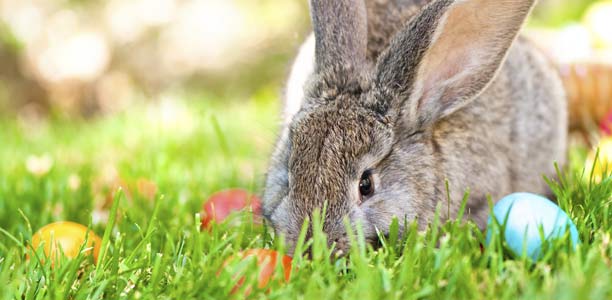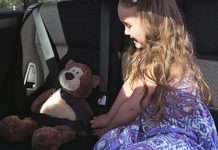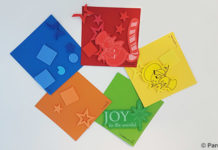Age
2-12
Duration of activity
Depending on age and which activities you chose, alternative Easter hunts can last for anything from a few minutes to a few hours.
Materials/equipment
The materials and equipment you’ll need for alternative Easter hunts depends on which ones you decide to do. Some need nothing but the great outdoors or basics you’ll probably have around the house like paper and pens for writing down clues. Other involve small treasures which you might need to find around the house or buy.
Cost
There are plenty of alternatives to Easter egg hunts that won’t cost a cent. For others, you can spend a couple of dollars (or a lot more) buying treasures for your children to find.
Preparation
- To make these Easter hunts, you’ll need to wait for Easter long weekend to arrive on the calendar. Build excitement and anticipation by having your child mark the days off on the calendar.
- Many of the hunts require you to hide treasures or clues for your child to find. Traditionally the hiding is done on Saturday night, so when kids wake up on Easter Sunday they can go hunting for clues, eggs or whatever treasures you decide to hide for them. Or you can be very organised and make a list in advance of where you will hide them, that way you also have a list you can tick off so you know the kids didn’t miss any.
- To add a bit of Easter fantasy to this activity, sprinkle flour on the front porch or another flat surface and make Easter bunny prints in it with your fingers.
What to do
Easter egg hunt alternative 1: Easter hunt for hidden treasures
- Collect treasure for your children to hunt for. You may like to buy new things, or gather up some of their favourite small toys to hide. Just about anything that’s small is good for a hunt, for example
- Trinkets like small toys or jewellery
- Accessories like hairbands
- Essentials like socks and undies
- Easter themed trinkets like small bunnies or decorative eggs
- Small pieces of fruit (wrapped in cellophane paper or ribbons to look exciting)
- Make a list of all the items you want to hide. Older children will be able to use it as a checklist and mark the items off as they go.
- When your children are busy doing something else, hide the treasures around the yard, or if you live in a flat, hide them inside. Outside you could put them under fallen leaves or behind potted plants or camouflage them by putting them next to something that’s the same colour. Inside you could hide them in cupboards or cups or behind furniture.
- When you are ready to start the hunt, show your children the list you made and explain to them that it is a list of treasures hidden in the yard or the flat. You may want to sign the note as the Easter Bunny, saying you’ve left them some special Easter things.
- For older children give them the list and a pencil or pen and explain that they should mark each time they find a treasure, so they don’t lose track. For younger children explain that you will help them by checking off the treasures as they find them.
 The children then start hunting for the treasures. You may need to give them clues as they go along, for example by saying, “what about around the tree, have you looked there yet?” However if they don’t have trouble or seem to be having fun searching even if it takes a long time, let them work it out for themselves.
The children then start hunting for the treasures. You may need to give them clues as they go along, for example by saying, “what about around the tree, have you looked there yet?” However if they don’t have trouble or seem to be having fun searching even if it takes a long time, let them work it out for themselves.- As they find the treasures, your children or you should mark them off the list. When you’ve made the mark, count how many they have found and how many are still hidden.
- For each new treasure, ask what they have found and talk about the characteristics like size, shape, colour and weight.
- Ask your child where they will look next. If they have trouble, get them thinking by asking what places are good for hiding things or give them some clues. Then start searching for the next treasure.
- Keep going until all the treasures have been found.
Easter egg hunt alternative 2: hunt for clues to solve an Easter mystery
- Think of an Easter mystery, for example where did the Easter Bunny lose its carrot or where is the Easter Bunny hiding. If you don’t mind your children eating chocolate in moderation, making the mystery where the Easter Bunny hid the egg is a great way to give them a single egg.
- Write clues that will help your children solve the mystery, without giving it away too early. A good way to do this is to direct them to a specific area where the next clue is hidden. Depending on their age the difficulty of the clues and the mystery will differ. For example clues for toddlers and pre-schoolers might be:
- The Easter Bunny’s carrot is somewhere outside. You’ll find a clue about where to find it near the sandpit.
- The Easter Bunny’s carrot is in the shade. But the next clue is in the sun, near the bird bath.
- The Easter Bunny’s carrot is underneath something. The next clue to help you find it is hidden near the trampoline.
- The Easter Bunny’s carrot is close now and there are no more clues. Look around and try to find it.
- These are just examples- write clues that direct your child to different parts of the yard, garage or house/flat and hide the next clues next to your furniture, ornaments or plants. You can write as many clues as you want, depending on the age of your children and how long you want the hunt to continue. For older children you could use more difficult language, for example instead of repeating ‘the next clue’ in each instruction, use variations like ‘another clue’, ‘next hint’. Increase the complexity of locative words for older children, for example incorporate words like left and right.
- When you have planned all the clues, write each one on a separate piece of paper and put it in an Easter envelope (or simply fold it).
- Keep the first clue and hide the remaining clues in the places you have given your children clues to find them in.
- Hide a carrot (or a single chocolate egg if you prefer) in the location indicated by the final clue.
- When you’ve prepared everything, tell your child that there’s an Easter mystery to solve- the Easter Bunny has lost its carrot (or whatever mystery you decide on).
- Give your child the first clue- you might want to write it pretending you are the Easter Bunny asking for their help. Let them read it or read it for them depending on their age.
- Start searching for the next clue. Talk to your child as you go to help them work it out, for example by saying ‘continue until you have read all the clues and found the carrot’.
Easter egg hunt alternative 3: hunt for natural treasures to decorate eggs
 Print some Easter eggs to decorate and show your child the plain paper eggs. You’ll also need some craft glue to play this game.
Print some Easter eggs to decorate and show your child the plain paper eggs. You’ll also need some craft glue to play this game.- Tell them that to turn the plain white eggs into special Easter eggs, they’ll need to decorate them.
- Explain that you are going on a hunt to find beautiful things to decorate the eggs with. This might include leaves, flowers, discarded wrappers from chocolate eggs or just about anything else that appeals to your child.
- Go for a walk and hunt for natural treasures as you go. Take a bag or container to collect them in.
- Be aware that it’s not okay to take things like leaves and flowers from protected areas like National Parks. However, you’ll find plenty of leaves at a local park or along the street. This is also an opportunity to turn junk like shiny chip packets or chocolate egg wrappers into decorations (but you might need to give them a wash first).
Easter egg hunt alternative 4: Hunt for treasure filled Easter eggs
- Buy some hollow plastic eggs which open in the middle- they’re inexpensive to buy at $2 shops and you can re-use them every Easter.
- Open the eggs and wash them in soapy water, rinse and dry before filling them.
- Fill the eggs with small treasures and healthy nibbles. Nuts and dried fruit are good food options; treasures like balloons and stickers are cheap to buy and lots of fun.
- Hide the filled eggs in your yard or flat while your child is busy doing something else.
- When you are ready, tell them that the Easter Bunny has hidden some special eggs that have treats inside. Ask them where they think they are hidden, and start the search.
- As you hunt for and find the eggs, talk to your child about where they are looking and what they find inside the eggs.
Tips
- Remember that for toddlers, pre-schoolers and other young children, the fun of hunting and finding is more important than what they find. Focus on making the hunt exciting by talking to your child as you go.
- Use your enthusiasm to encourage your children as they do the hunt. If you’re excited about looking for another hiding spot, your child will be enthusiastic and want to keep on searching for Easter treasures.
- Use physical touches and warmth to congratulate the children and increase the impact of the hunt. High five them when they find a treasure or hold hands or have a hug as you go about the hunt.
- Avoid big gifts or unhealthy treats which will encourage your child to expect these in the future and associate the fun and excitement with material goods or unhealthy food.
- Encouragement and positive feedback from adults helps kids develop socially and emotionally. They’ll probably value it as much (if not more) than a big Easter egg or present. Encourage them and make positive comments as they’re hunting for Easter treasures, for example you could say, “You’re really thinking hard about the different hiding places. And there are still some more to find! Where else do you think we could find an Easter treasure?”
- For extra excitement leave Easter Bunny footprints along the trail of the hunt. Sprinkle flour on a flat surface like a footpath and make prints using your fingers.
- Give your child a basket to put the eggs and/or treasures in as they hunt.
Safety
- Be careful not to make the hiding spots dangerous. For example, don’t hide treasures or clues in places your child will need to climb dangerously to find them. Make sure you tell your children that no climbing will be required.
- Beware of creepy crawlies like spiders hiding in hidden spots in the back yard.
- Be sure you and your children wash your hands according to the correct technique when you finish hunting.
- Always wash and dry plastic eggs or other containers you will use in the hunt before you put food in them.
Educational outcomes
Mathematical skills
Alternative Easter hunts are not only lots of fun, they help children to develop a range of mathematical skills which will set the foundation for your child’s later mathematical understanding. What your child learns will depend on their age.
For example toddlers:
 Learn from counting how many objects they find inside a plastic egg, or how many treasures are still on the list to find (however at this age they’ll probably only be able to count to three).
Learn from counting how many objects they find inside a plastic egg, or how many treasures are still on the list to find (however at this age they’ll probably only be able to count to three).- Learn to identify colours and shapes when you talk to them about the colours and shapes of the treasures they have found.
- Learn to differentiate between and use mathematical language to describe big and small treasure (but usually don’t yet know the difference between short and long).
- Understand space, for example when they try to fit their hand or body in a space where they think something is hidden.
The mathematical learning for pre-schoolers will involve them:
- Comparing and discussing the similarities and differences between the treasures they find (e.g. size, colour and shape) and expanding their mathematical vocabulary. At this age they’ll start using more complex terms like longer and shorter (instead of bigger and smaller).Viriginia Children generally understand the meaning of short and long at about three years old.
- Older pre-schoolers may also be able to put the treasures in order according to their size or length and use words like long, longer, longest to describe them.
- Learn language to describe the location of objects, for example close and far, above and below. By about four years of age pre-schoolers will be starting to understand the concept of left and right, and using a range of other words to describe position (e.g. top/bottom).
- Counting all the Easter treasures they find, and how many remain hidden waiting for them to develop their counting skills. They may also be able to discuss the order in which they found the objects (e.g. 1st, 2nd, 3rd).
Older children will be able to develop more advance mathematical skills, for example:
- Practice addition and subtraction by adding together the number of treasures they have found and the number remaining on the list, or counting all the objects on the list and subtracting the number they have found. Six years olds (in Grade 1) will benefit from this extension activity.
- Vocabulary to describe where they found the treasures in relation to objects in the backyard. By 6-8 years kids are generally able to correctly use words like left and right.
- Discuss mathematical concepts like halves, quarters and fractions, for example by dividing the treasures they find into two equal halves, or talking about the relative size of treasures (e.g. this one is only half as big). Seven to eight year old children will be able to use this sort of language.
- Use a ruler to compare the size of the treasures, from about seven years of age. By about nine years of age most children can measure to the nearest centimetre or millimetre.
- Divide the treasures into groups based on whether or not they are symmetrical. This is another great extension activity for 7-8 year olds.
- Increase their understanding of angles, for example by comparing the size of angles on two objects and identifying the bigger and smaller angles. From about nine years of age, children will have the ability to determine whether or not an angle is bigger or smaller than a right angle.
Motor skills
Fine motor skills
Picking up small objects, or performing fiddly tasks like opening an envelope or plastic egg will help toddlers and pre-schoolers strengthen the muscles in their fingers. These muscles are the basis of their fine motor skills, the skills to perform all sorts of fiddly tasks with the fingers like turning the pages of books and writing.
Gross motor skills
Hunting for treasure involves lots of running around, reaching up and bending down. These are all fantastic ways for toddlers, pre-schoolers and older kids to develop their gross motor skills. These are the skills that allow them to coordinate the movement of their arms and legs. Toddlers will develop just by walking around by themselves. Pre-schoolers will get more out of these hunts if you incorporate different forms of movement, for example skipping and jumping, as you search. By about four years of age they should have good balance and coordination.
Communication and social skills
 Alternative Easter hunts are also a great way for children to develop social and communication skills and expand their vocabulary. Toddlers and pre-schoolers will benefit from hearing and having the opportunity to use different words to express their emotions (e.g. I’m sad because I can’t find a treasure, I’m happy because I found some stickers). As they get older they’ll be able to use more complex words to describe their emotions (e.g. frustrated, excited). Between 6-8 years children will be exploring and beginning to master complex grammar, and communicate effectively with other children. By about nine or ten years they will understand the different words used to convey feelings (I am frustrated that I can’t find the next clue) and facts (I have been looking for the next clue for five minutes).
Alternative Easter hunts are also a great way for children to develop social and communication skills and expand their vocabulary. Toddlers and pre-schoolers will benefit from hearing and having the opportunity to use different words to express their emotions (e.g. I’m sad because I can’t find a treasure, I’m happy because I found some stickers). As they get older they’ll be able to use more complex words to describe their emotions (e.g. frustrated, excited). Between 6-8 years children will be exploring and beginning to master complex grammar, and communicate effectively with other children. By about nine or ten years they will understand the different words used to convey feelings (I am frustrated that I can’t find the next clue) and facts (I have been looking for the next clue for five minutes).
Children of all ages will learn about non verbal forms of communication like pointing or making facial expressions. Older children will benefit from opportunities to practice selecting appropriate body language, gestures and tone of voice to match the words they are speaking.
Hunting for Easter treasure is also a great opportunity to develop social skills, particularly if children do it as a group. Toddlers and pre-schoolers will begin to understand that games have rules and they need to take turns and cooperate with other children. Children aged 6-8 will have developed conflict resolution skills, so they will be able to work it out for themselves if a dispute arises about ‘who found a piece of Easter treasure’. Older children will understand the ways different events and situations effect their emotions (and the way they influence other people). They will also be able to control their emotions and know when to step forward and be a leader.
It’s also a great opportunity for children to develop great relationships with their parents and other significant adults. As you go about the hunt, encourage them with enthusiasm so they can see you’re interested and enjoying the game as much as them. Make the most of opportunities to express your love through physical touches, for example hold their hand as you walk around or give them a high five when they find a treasure. Give them some specific positive feedback when they’ve done a good job and do it in front of other people. These simple things will help children feel secured and loved and develop the confidence they need to go on and do things independently in the big wide world.
Literacy skills
The Easter hunts will also help develop their language and literacy skills because it also involves reading and writing. For example reading the checklist (or having it read to them while you point to the words) will help toddlers and pre-schoolers develop their understanding of how written words represent concepts and spoken words. They will learn from seeing the letters written and sounding out the words (or pretending to read if they are not old enough to actually read).
Reading the clues in the Easter mystery hunt is a great way for children of all ages to develop their literacy skills. Reading the words will help 9-10 year olds better understand spelling rules (for example how different combinations of letters are combined in words) while 11-12 year olds will be able to understand complex spelling concepts, for example that some words don’t follow the usual rules.
Understanding the world around them
Whether you hunt in the house, the yard or the great outdoors your child will be engaging with the world around them and developing a better understanding of it. Toddlers will benefit just from having the opportunity to show their interest in different things around them, and taking the lead as you explore the environment. They will probably want to name things. Pre-schoolers will be developing their understanding that things have different parts (e.g. a tree has a trunk branches and leaves) and benefit from talking about the different types of matter (solid, liquid and gas). They’ll also be showing an interest in caring for other living things around them, for example the birds and insects they see along the way.Virgnia
References
- Virginia Early Childhood Development Alignment Program. Milestones of child development- A guide to young children’s learning and development from birth to kindergarten. 2009. (cited 24 March 2014). Available from: (URL Link)
- Queensland Health. Physical and cognitive milestones. 2007. (cited 24 March 2014). Available from: (URL Link)
- Australian Curriculum and Reporting Authority. Australian Curriculum- Mathematics. Undated. (cited 24 March 2014) Available from: (URL Link)
- Australian Curriculum and Reporting Authority. Australian Curriculum- English. Undated. (cited 24 March 2014) Available from: (URL Link)
- Queensland Health. Development milestones 6-8 years. 2006. (cited 24 March 2014). Available from: (URL Link)
- Australian Curriculum and Reporting Authority. Personal and Social Capability. Undated. (cited 24 March 2014). Available from: (URL Link)
- Durden T, Making it happen: Building Positive Relationships with Children. University of Nebraska. 2013 (cited 23 March 2014). Available from: (URL Link)




 (11 votes, average: 3.36 out of 5)
(11 votes, average: 3.36 out of 5) 






